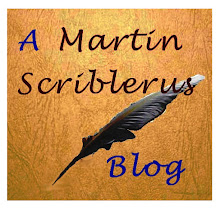The Guardian kicks off in usual whiney fashion:
Had the Grosvenor estate bequeathed to the new Duke of Westminster been liable for 40% inheritance tax, the amount owed to the Treasury would have been not far off the government’s entire death duty take for the last financial year.
Hugh Grosvenor, however, avoids a significant cut to his £9bn inheritance because the estate is held in a trust. Britain’s generous trust law ensures that the country’s largest fortunes are largely kept intact. This is borne out by statistics which show that duties are a modest source of revenue for the Treasury. HMRC collected total tax of £534bn in 2015-16, of which inheritance tax receipts represented £4.7bn.
“The benefits of trusts are that they don’t form part of somebody’s estate,” says Ian Dyall, a manager at the financial adviser Towry. “In a discretionary trust, you have a whole pick list of potential beneficiaries which the trustees can choose to appoint benefits to. Because of that, you can’t point a finger to any potential beneficiary and say that’s your money. Money can stay in the trust and cascade down from generation to generation and nobody pays inheritance tax on it.”
But is fair-minded enough to explain the catch:
Instead of one-off taxation, trusts are subject to charges every 10 years from the anniversary of their creation. Known as the inheritance tax periodic charge, it can amount to 6% of the funds held. There are, however, plenty of loopholes. Agricultural and business property relief applies, and the Grosvenor assets will have been managed to take full advantage of that.
For sure there are loopholes, so why not do a 0.6% annual charge on the value of a home with exceeds the IHT nil rate band and simply add it to the Council Tax bill? They can do the same for the ATED charge aka Mansion Tax Lite, only instead of charging a high rate on a small number of dwellings which are currently caught, they could apply a much smaller annual charge to all dwellings in the value bands to end up with the same revenues. The same goes for SDLT, an awful tax, that can be turned from a large one-off charge every time a home is sold into a much lower annual charge. Then the next obvious step is to revalue all homes, make an adjustment for bricks and mortar value and smooth out the resulting tax bill relative to values to avoid cliff-edges and we end up with low-level LVT, job done.
As a result of all this we can simply scrap Inheritance Tax because the residual revenues on everything that is not land-related would be peanuts and probably shouldn't be taxed anyway.
A whiff of something unwholesome
9 minutes ago


2 comments:
I think that the answer to that is simply 'yes'.
As far as SDLT is concerned why not have it paid off in installments over 25 years, as you said, BUT the balance is written off every time the property is sold/transferred?
Thereby a) gradually phasing in LVT/higher property taxes. Nullifying the PWiM KLN b) it would not be a tax on transactions. So will not discourage people from moving.
Post a Comment